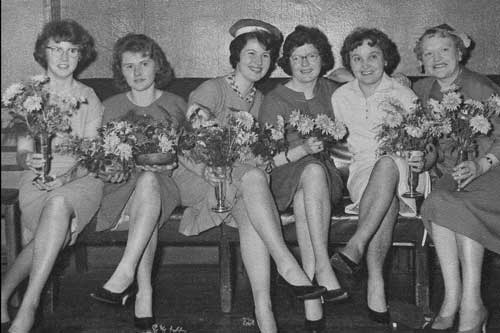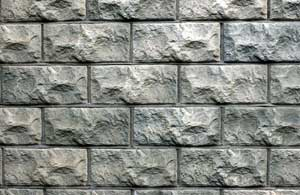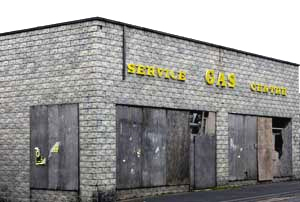|
Wade, Bits & Pieces |
|
I took this photo about 1960 at the Wade Staff Christmas party in the Savoy

Left to Right: Elizabeth Heyburn. Marianne Little, Monica Lyttle, Merle Dynes,
Eva Blakely, Hazel McKinney.
|
|
What memories do past employees have of the following ventures? For one reason or other neither ever got off the ground. The wall tiles were produced late 1950's. I can recall Major Carryer bringing a few tiles to be photographed (I then worked for the Carlton Studio) he was very excited about the new product and felt that the tiles could be a winner. Each tile measures about 14” x 7”. Mr. Stanley who owned the Portadown Gas Company had built a new showroom in Bridge St. this building was clad with the new tiles. I am not aware of any other building on which they were used. Below are a few photos of the Gas Company showroom which I took this afternoon, you would never believe that the tiles have withstood the elements for almost fifty years, they are as fresh as new and would appear to have a self cleaning quality. The photograph on extreme right shows the dilapidated showroom which will be demolished to make way for re-development. I wondered whether it would be possible to remove and preserve the tiles? I doubt it though.
|
|
|
|
|
|
Wade Wall Plaques By David Chown. C&S Collectables Direct.
During
the late 1950's, the highly prestigious Hagen-Renaker Pottery of San Dimas,
California, produced the most stunning plaques and wall hanging figures
which covered a variety of subjects from butterflies, horses, fish and a
bison to still life. All were produced in the usual Hagen-Renaker
earthenware. Following discussions between Maxine Renaker, wife of the
president of HR and Iris Carryer of Wade (Ireland), some of the molds were
sent to Portadown, Northern Ireland where it was hoped Wade could produce
them in porcelain for the gift market. This however became something of a
nightmare as during the cooling process, after being removed from the kiln
they cracked. As Iris Carryer explained to me recently, "It was awful,
Ping, ping, ping! They were all cracking as they cooled down." This was
due to stress on the porcelain which, as it cooled, had the effect of
pulling it apart and thus the cracks appeared.
Getting Steamed Up When Wade (Portadown) was opened in 1947, two vertical steam boilers were used to power and heat the plant. As new boilers were impossible to obtain in the immediate post- war era, these were second-hand. Billy Belshaw, maintenance manager, christened them ‘Gog’ and ‘Magog’. Gog was much the older of the two but proved to be no worse than its younger brother. It was a constant struggle to keep them going. As production increased, the demands made on the ailing boilers grew proportionally. A new boiler was urgently required and “If it is not forthcoming very soon,” said Billy, ‘we’ll be needing a new boiler-house roof, as well.” In fact, Billy was so worked up about the matter, that there was more ‘steam’ coming from him than the two old boilers. Eventually, to Billy’s great delight, a sparkling new boiler was purchased from Penman & Co of Glasgow. ‘Billy Belshaw’s Beautiful Boiler’, as it was known, was capable of an output of 8000 lbs per hour. It was oil-fired, unlike Gog and Magog which were dependant on large quantities of coal or turf. It is reported that in 1947, when fuel was particularly scarce, no less a person than the managing director, Major Straker Carryer, “lost” a few tons of turf that he had stored, for domestic use, in one of the factory sheds. One dark night the turf disappeared, never to be seen again. To say the least the major was “steaming”. When he investigated the theft, he was told that “nobody knows nothing about anything”. He may not have appreciated the solecism, even less the answer. Almost all the Wade employees were equally baffled - but, strangely enough, Billy Belshaw had a broad smile upon his face! John R Wright 2003
|


